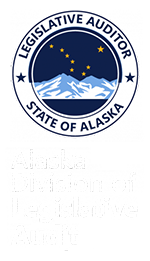| SUMMARY OF: | A Special Report on the Department of Natural Resources, Agriculture Revolving Loan Fund, Selected Issues, June 24, 2013 |
Purpose of the Report
In accordance with Title 24 of the Alaska Statutes and a special request by the Legislative Budget and Audit Committee, we have conducted a performance audit of the Agriculture Revolving Loan Fund (fund or ARLF). The purpose of this audit is to examine the fund’s performance and administration and compare fund administration to other loan programs and industry best practices. The goal of the evaluation is to identify how the fund’s performance could be improved and how efficiencies could be gained with an emphasis on whether the fund should be administered by a different state agency.
Report Conclusions
We conclude that ARLF’s fiscal condition is the result of agricultural policy decisions made over the past 30 years by executive and legislative branches of government. Many lending and management decisions were made in favor of supporting the agricultural industry over maintaining the fund’s fiscal health. Since inception, ARLF’s fund equity has declined by 69 percent, and it annually loses over $118,000 from operating Mount McKinley Meat and Sausage Company (MMM&S).
Although ARLF’s default rate was found to be reasonable at the program level when compared to other agricultural loan programs, the audit identified numerous administrative deficiencies that, if not corrected, will likely contribute to future losses. Examples of deficiencies include ineffective and inefficient processes for loan evaluation and approval, property management, and loan management. Additionally, this audit found regulations do not promote fiscally responsible decisions on a consistent basis.
Our review of comparable loan programs found that boards similar to the Board of Agriculture and Conservation (BAC) are not commonly used for lending decisions. It is more common for lending decisions to be made by professional lending staff or by a committee with lending expertise. Based on administrative deficiencies and opportunities for increased efficiency, we conclude that moving ARLF administration and loan decisions to the Division of Economic Development may improve the loan program’s efficiency and effectiveness, and help ensure the fund’s future solvency.
Findings and Recommendations
Recommendation No. 1
The legislature should consider moving the ARLF administration to the Department of Commerce, Community, and Economic Development’s Division of Economic Development.
Report conclusions outline examples of deficiencies in the Division of Agriculture’s processes for evaluating and approving loans, managing property, and managing loans. Decisions to promote agriculture and support Alaskan farmers through the use of ARLF assets have not always been fiscally prudent. While BAC diligently works to serve the agricultural industry, improvements have not effectively eliminated the types of deficiencies noted in the audit.
Recommendation No. 2
ARLF administrators should revise ARLF’s regulations to promote industry best practices.
ARLF’s regulations do not promote consistent fiscally responsible decisions. Specifically, regulations do not include criteria for approving loans and do not provide sufficient guidelines for evaluating collateral.
Recommendation No. 3
ARLF administrators should pursue disposal of business properties and revise property leasing rates to provide a return on ARLF assets.
ARLF currently owns two active business properties, the MMM&S and the Alaska Farm Cooperative (cooperative). Operating businesses such as the MMM&S and the cooperative is not within ARLF’s statutory authority. ARLF’s statutory purpose is to promote more rapid development of agriculture as an industry by means of long-term low-interest loans.

